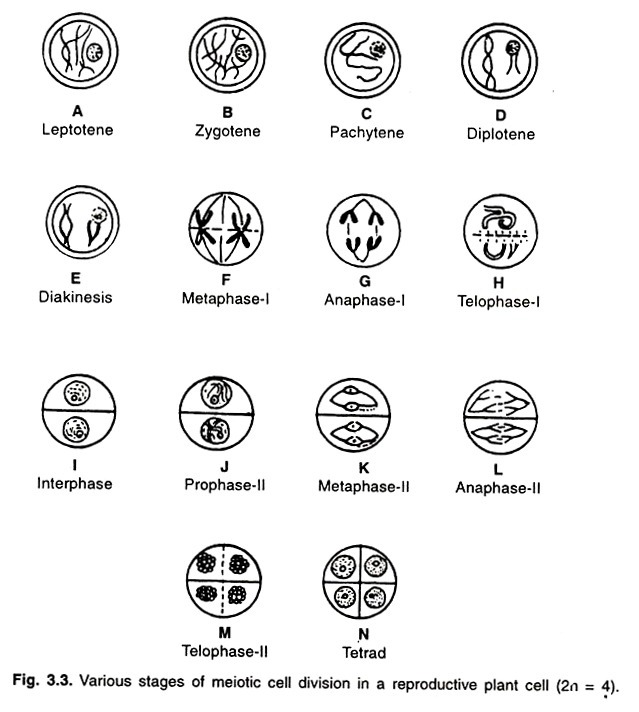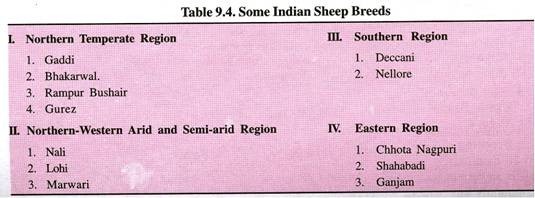ADVERTISEMENTS:
Here are your notes on Genus Vaucheria!
There are about 40 species in this genus. Majority of them are fresh water in habit and about half a dozen are marine.
Occurrence:
Majority of the species of Vaucheria are either aquatic or terrestrial. The terrestrial species are found upon damp soils and muds in yellowish green velvet-like carpets.
ADVERTISEMENTS:
In terrestrial species, the rhizoid-like branches are present at the base of the thallus which attach it to the substratum. The fresh water species are usually found in aerated water, e.g., in water cataracts.
Structure:
The thallus consists of branched, coenocytic unseptate and tubular filament. At the base of the thallus a branched rhizoidal system is present attaching thallus to the substratum is known as ‘hapteron’. The septation takes place at the time of the formation of reproductive bodies or injury to the plant.
The cell wall is thin and consists of pectose. In the centre of the tubular thallus, there is a big central vacuole. The cytoplasm is confined to the peripheral region. The numerous discoid chloroplasts are embedded in the cytoplasm towards outside and numerous minute nuclei are found towards the central vacuole. The chloroplasts are devoid of pyrenoids. The strach grains are lacking.
Reproduction:
The reproduction takes place by vegetative, asexual and sexual methods.
1. Vegetative reproduction:
This type of reproduction takes place by accidental breaking of thalli into small fragments. Each fragment of the filament is capable to give rise to a new plant.
2. Asexual reproduction:
The asexual reproduction takes place by several means, e.g., by zoospores, aplanospores, hypnospores, etc.
(a) By zoospores:
The multiflagellate compound zoospores also known as ‘synzoospores’ or ‘coenozoospores’ are developed in these genus usually in aquatic forms. A single compound zoospore develops in a single zoosporangium. Any distal branch of the thallus may convert into a zoosporangium. Much of the food reserves, chloroplasts and nuclei accumulate in the distal end of the branch of the thallus.
This distal end is comparatively swollen. Very soon a septum appears at the base of this swollen end. The central vacuole disappears, the nuclei and chloroplasts reverse their position, i.e., the chloroplasts shift inwards and nuclei towards periphery just beneath the cell wall. The protoplast retracts from the zoosporangial wall and opposite to each nucleus two flagella are developed.
The terminal portion of the zoosporangium softens and a small pore develops. Through this small terminal aperture the zoospore squeezes out and swims freely in the water. The zoospore is ovoid or elliptical. It is multiflagellate. From each peripheral nucleus, a pair of flagella is given out.
ADVERTISEMENTS:
There are several chloroplasts arranged inner to the nuclei around the large central vacoule. The nuclei and chloroplasts are embedded in cytoplasm. The zoospore swims for about 15 to 20 minutes and then settles down to some substratum, withdraws its flagella and secretes a wall around it. Very soon it germinates giving rise to 2 or 3 tubular outgrowths and a new branched thallus develops.
(b) By aplanospores:
The aplanospores develop in dry conditions and especially in terrestrial forms. Here the contents of an aplanosporangium develop into a non-motile aplanospore. This aplanospore escapes by the irregular rupture of the aplanosporangium. On the approach of favourable conditions, the aplanospore germinates producing tubular outgrowths. They may germinate after liberation or within the aplanosporangium.
(c) Hypnospores and cysts:
Sometimes in terrestrial species the segmentation takes place in the tubular branches forming many small compartments. Around the protoplast of each segment, a thick wall develops and they are called ‘hypnospores’. The hypnospores either germinate directly producing new thalli or they divide producing thin-walled cyst.
Each cyst germinates in a special way. The cyst breaks and a pore develops at one end of it. The protoplast of this comes out in amoeboid fashion, becomes rounded and develops, into a new thallus. The segmented thallus looks like an alga Gongrosira and this stage is called ‘Gongrosira stage’.
3. Sexual reproduction:
ADVERTISEMENTS:
The sexual reproduction is oogamous. About all the species reproduce by this method. All the fresh water species are homothallic. The sexual reproduction takes place in the forms growing in damp soil or still waters. It does not take place in running water species. In the monoecious species the oogonia and antheridia develop on the same thallus and in dioecious species these organs develop on two different thalli. Here we will consider the sexual reproduction of fresh water forms (homothallic).
Development of antheridium:
Mostly the species are protandrous, i.e., antheridium develops first and oogonium afterwards.
The antheridia develop on the lateral branches at their ends shortly before the formation of oogonia. The part of the thallus giving rise to antheridium possesses abundance of cytoplasm, chloroplasts and nuclei. In most of the fresh water species, slender hook-like antheridium develops having a pore at its distal end. A septum develops just beneath the curved portion of the antheridium.
The nuclei of the antheridium divide mitotically again and again, and around each nucleus cytoplasm is deposited. Each such small bit metamorphoses in a biflagellate antherozoid. These antherozoids are liberated through the apical round opening of the antheridium.
ADVERTISEMENTS:
Each antherozoid is spindle-like and the insertion of flagella on it 4s lateral. According to Couch (1932), the antheridium begins to develop in afternoon and the antherozoids are formed next morning.
Development of oogonium:
As mentioned above, the fresh water species are homothallic and the oogonium develops on the same filament just near the antheridium after some time. At the time of the development of oogonium, a small mass of colourless multinucleate cytoplasm is accumulated in the thallus just near the antheridium. This colourless mass of cytoplasm is called ‘wanderplasm’.
The wanderplasm moves in the apical part of the oogonium developed by the lateral outgrowth of the filament. Gradually the oogonium outgrowth becomes globular and sufficiently large in size. Enough of cytoplasm, many nuclei and numerous chloroplasts migrate in this young globular oogonium.
A septum develops at the base of the oogonium which separates the oogonium from the rest of the plant body. A colourless beak-like structure develops at the upper end of the oogonium. All the nuclei but one disintegrate and a round uninucleate egg develops inside the oogonium. At maturity, the beak gelatinizes and an opening develops.
As soon as the antherozoids liberate from the apical opening of the antheridium in the morning, they approach the oogonium. Many antherozoids enter through the opening of the oogonium but only one lucky antherozoid penetrates the egg. The plasmogamy is followed by karygoamy. The small nucleus of antherozoid enlarges and becomes of the size of female nucleus and only then fuses with the large nucleus of the egg. Of course, the fusion takes some time.
ADVERTISEMENTS:
At the time of the fertilization of the female nucleus shifts to the periphery of the egg to receive the male nucleus. After fusion, the large diploid nucleus again shifts in the centre of the zygote. The zygote secretes a multilayered wall around it and called die oospore. The oospore is sufficiently rich in oil reserves.
Germination of zygote:
The thick walled zygote (oospore) undergoes a resting period. This resting period may be of several months. On the approach of favourable conditions, the zygote germintes producing tubular structure which develops into a new thallus. Gross (1937) has given an inconclusive data of the meiotic division of the zygote nucleus during germination.
Classification:
The position of Vaucheria is not quite clear. F.E. Fritsch has placed this genus in the ninth and last family Vaucheriaceae of his order Siphonales. Gilbert M.Smith has placed this genus in his order, Heterosiphonales of division Chrysophyta. V.J. Chapman has placed this genus in his class Xanthophyceae of Phylum Chrysophycophyta. Modern algologists place this genus in the Class Xanthophyceae of Division Xanthophycophyta.
Many algologists for a long time questioned the practice of placing Vaucheria in the Siphonales of the Chlorophyceae. For the first time in 1945 Chadefaud formaly placed this genus among the Xanthophyceae. It was placed in this class because of the colour of chromatophores and lack of starch.
Since then other evidences have also been collected which confirm its place among Xanthophyceae. The pigments of the chromatophores are those of typical Xanthophyceae. Koch (1951) reported that of the two flagella borne by an antherozoid one is whiplash type and the other of the tinsel type.
Systematic Position:
Division-Xanthophycophyta; Class-Xanthophyceae; Order- Heterosiphonales; Family-Vaucheriaceae; Genus-Vaucheria.







